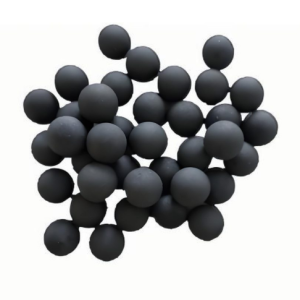Discover Premium Ceramic Products | Durability & Elegance United | Advanced Ceramics
1. Introduction
Just 24 hours ago, a major U.S. foundry announced it had switched its entire melting operation to silicon carbide crucibles to reduce energy consumption by 18%—a move that’s sparking renewed interest in this high-performance ceramic material across the industrial sector.

Silicon carbide crucibles have long been prized for their ability to withstand extreme temperatures, thermal shock, and chemical corrosion. But what makes them superior to other refractory materials? And how does silicon carbide stack up against close relatives like silicon nitride or boron carbide?
In this deep dive, we’ll break down the science, compare key alternatives, and explore the surprisingly wide range of applications—from industrial furnaces to your kitchen oven.
2. What Makes Silicon Carbide Crucibles So Special?
Silicon carbide (SiC) is a compound of silicon and carbon with a covalent bond structure that gives it exceptional hardness, thermal conductivity, and resistance to oxidation.
Unlike traditional clay-graphite crucibles, silicon carbide crucibles maintain structural integrity above 1,600°C. This makes them ideal for melting non-ferrous metals like aluminum, copper, and zinc without contamination.
Key advantages include:
- Extremely high thermal shock resistance
- Low thermal expansion
- Excellent chemical inertness
- Long service life even under cyclic heating
3. Silicon Carbide vs. Boron Carbide vs. Silicon Nitride
3.1 Boron Carbide vs Silicon Carbide
Boron carbide (B4C) is harder than silicon carbide and used in armor and abrasives, but it’s far more expensive and less thermally conductive. For crucible applications, boron carbide’s brittleness and poor oxidation resistance above 500°C make it impractical.
Silicon carbide wins for high-temperature stability and cost-effectiveness in industrial melting.
3.2 Silicon Nitride: A Strong Contender?
Silicon nitride (Si3N4) offers excellent thermal shock resistance and mechanical strength, often used in bearings, cutting tools, and even custom silicon nitride heat shields for aerospace.
However, silicon nitride crucibles—produced by specialized silicon nitride crucible factories—are niche due to higher manufacturing complexity and cost. They’re preferred only in ultra-high-purity applications, like semiconductor crystal growth.

For most foundries, silicon carbide remains the go-to for balance of performance, durability, and price.
4. Beyond Crucibles: The Expanding Universe of Silicon Carbide Ceramics
Silicon carbide’s utility isn’t limited to crucibles. Its robust properties have led to diverse applications across industries.
4.1 Industrial Components
From rbsic silicon carbide tile blocks lining kilns to silicon carbide burner nozzles in combustion systems, this material dominates high-heat zones. Silicon carbide brick and silicon carbide ceramic columns are common in furnace construction.
Even silicon carbide tubes—like silicon carbide thermocouple protection tubes or silicon carbide ceramic tubes for furnace use—leverage SiC’s stability in corrosive, high-temp environments.
4.2 Plumbing and Valves
Silicon carbide ceramic disc taps and silicon carbide ceramic disk for tap mechanisms offer unmatched wear resistance. These are used in quarter-turn taps where longevity matters more than cost.
Similarly, silicon carbide ceramic piping and silicon carbide ceramic plumbing pipe resist erosion in abrasive fluid handling.
4.3 Kitchenware and Tableware
Surprisingly, silicon carbide has entered the culinary world. Products like silicon carbide ceramic baking dish, silicon carbide ceramic dinner plates, and even silicon carbide ceramic butter dish with lid combine heat retention with aesthetic appeal.
Brands like Staub have explored silicon carbide baking dish staub lines, while artisans craft silicon carbide handcrafted ceramic plates and silicon carbide ceramic christmas plates for premium table settings.
Other popular items include silicon carbide ceramic casserole dish with lid, silicon carbide ceramic salad bowl, and silicon carbide ceramic ramekins—all valued for oven-to-table performance.
4.4 Grinding and Precision Tools

Silicon carbide discs are widely used as grinding media. Whether it’s silicon carbide diamond grinding disc for pottery or silicon carbide ceramic sanding discs, the material’s hardness ensures efficient material removal.
Specialized forms like silicon carbide piezo ceramic disc even enable sensing applications, though these are less common.
5. Manufacturing Methods Matter
Not all silicon carbide crucibles are equal. The performance depends heavily on fabrication technique:
- Reaction-bonded SiC (RBSiC): Offers high density and strength; used in rbsic silicon carbide tile block and crucibles.
- Sintered SiC: Highest purity, ideal for semiconductor and lab use.
- Nitride-bonded SiC: Good thermal shock resistance, lower cost.
The choice affects porosity, strength, and maximum operating temperature—critical factors for industrial buyers.
6. Conclusion
Silicon carbide crucible remains the gold standard for high-temperature industrial processes thanks to its unbeatable mix of thermal, chemical, and mechanical properties. While alternatives like silicon nitride serve ultra-specialized roles, and boron carbide excels in hardness-only applications, silicon carbide delivers the best all-around performance.
And as we’ve seen, its reach extends far beyond the foundry—into kitchens, labs, plumbing systems, and precision engineering. Whether you’re melting metal or baking a casserole, silicon carbide ceramic dishes and components offer reliability where others fail.
Our Website founded on October 17, 2012, is a high-tech enterprise committed to the research and development, production, processing, sales and technical services of ceramic relative materials such as Why. Our products includes but not limited to Boron Carbide Ceramic Products, Boron Nitride Ceramic Products, Silicon Carbide Ceramic Products, Silicon Nitride Ceramic Products, Zirconium Dioxide Ceramic Products, etc. If you are interested, please feel free to contact us.

